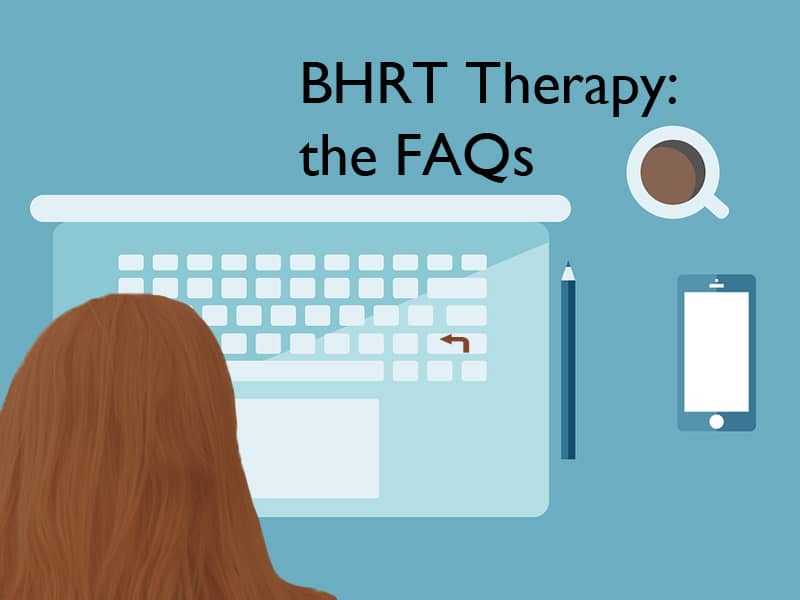
BHRT therapy is about hormones. And you don’t really think about them until there’s a problem. There’s nothing wrong with that – a well-functioning body is your greatest tool, right? But just like your car or your home, your body sometimes needs some maintenance to keep it in peak condition. And just like a car, one malfunctioning system can affect your whole experience.
So let’s answer all your questions about hormones and BHRT therapy in one place.
What Are Hormones?
Hormones are chemical messengers that help your brain and your body talk to each other. They also help cells, organs, tissues, and other systems in maintaining homeostasis.
Homeostasis
According to this definition, homeostasis is “the maintenance and regulation of the stability and constancy needed to function properly. Homeostasis is a healthy state that is maintained by the constant adjustment of biochemical and physiological pathways.”
How Do You Know That Your Hormone Levels Are Unbalanced?
The first thing you’ll probably notice are the symptoms of a hormone imbalance. They’re easily identifiable:
- foggy thinking
- difficulty concentrating
- sleeplessness
- muscle loss
- weight gain
- low energy
- low libido
- hot flashes
- night sweats
- sexual issues like vaginal dryness or erectile dysfunction
If you’ve already tried relieving the symptoms yourself, and are not getting the results you want, the next step is to determine if your symptoms relate to hormonal imbalance. This means comprehensive lab testing.
Your provider may test blood, urine, and even sometimes saliva samples to measure the current levels of your natural hormones. The results of these lab tests combined with an evaluation of your medical history and current symptoms are important. They give your provider the information they need to make a diagnosis. They can then develop a treatment plan that could include bio-identical hormone replacement therapy – usually abbreviated these days to BHRT therapy.
Can Men Have Hormone Imbalances Too?
Yes. The most common hormone imbalance in men is fluctuating or dropping hormone levels. This causes many of the same symptoms that women have when they’re going through perimenopause and menopause.
What is BHRT Replacement Therapy?
Drops in hormone levels are a natural part of aging. Using the same hormones that your body makes naturally to replace “what you’ve lost” reduces symptoms caused by hormone deficiencies. The way we do the replacement is through Bioidentical Hormone Replacement Therapy (BHRT).
What Are Bioidentical Hormones?
Bioidentical hormones are an identical structural match for the hormones that your body naturally produces.
What’s the Difference Between Bioidentical Hormones and Synthetic Hormones?
Both bioidentical hormones and synthetic hormones are created in labs. But the structure of synthetic hormones is slightly different than the hormones your body naturally creates. Bioidentical hormones match human hormones molecule by molecule. This means they hook up to receptors perfectly and deliver their full message. In contrast, synthetic hormones are clunky.
What Are Bioidentical Hormones Made Of?
Bioidentical hormones derive from plants like soy or wild yams.
What is BHRT Pellet Therapy?
BHRT pellet therapy is one of many delivery methods for BHRT. It’s perhaps the most sustainable, consistent, and easy method for your body to receive hormones.
What’s in BHRT Pellet Therapy?
It depends on what your symptoms are and which hormone(s) your body needs. BHRT pellets may include
- estrogen,
- progesterone,
- testosterone,
- thyroid hormones,
- DHEA,
- melatonin, or
- other hormones as needed.
What Does a BHRT Pellet Look Like?
Perhaps not the most important thing about BHRT therapy, but the answer is this. A BHRT pellet looks like a grain of white rice. It’s that small! All the hormones you need for a 3-6 month period are in that pellet.
Do I Swallow the BHRT Pellet?
No. Your practitioner places the BHRT therapy pellet under your skin every three to six months. This is usually on the upper part of your buttocks. The pellet contains customized levels of hormones. These hormones are slowly and consistently released into, and metabolized by, your body in much the same way that your body’s natural hormones are secreted.
Bioidentical Hormone Replacement Therapy Side Effects
Almost every drug or therapy has side effects. BHRT side effects are typically linked to dosage. Many can be relieved if your provider makes a dosage adjustment. Three side effects:
- Aggressiveness
- Acne
- Irritability
…have all been report in the early stages of testosterone hormone therapy, but these side effects are generally resolved as your levels become balanced.
On the other hand:
- Breast tenderness
- Spotting
- Cramping
- Bloating
…may be experienced in the early stage of estrogen hormone treatment but usually resolve themselves as hormone levels become balanced.
Occasionally redness or itching at the site occurs right after the pellet is inserted, but this passes as your body adjusts to treatment.
Do You Have to Get a Prescription For Bioidentical Hormones?
Yes. Your provider prescribes a special blend of hormones that will address your unique needs. The prescription is then compounded (mixed) by a compounding pharmacist. Your provider will adjust your prescription until they find the perfect dosage for you.
Can Men Benefit From Bioidentical Hormone Replacement Therapy?
Yes! Both men and women experience unpleasant symptoms from hormone imbalances. And both can use BHRT to alleviate these symptoms and improve their quality of life.
Do You Have to Be a Certain Age to Begin BHRT?
No. There’s no age limit on who can receive BHRT. Although most women and men experience the natural fluctuation in hormone levels after age 40, some individuals can begin andropause and perimenopause much earlier. Factors other than aging can also cause hormone imbalances. When these factors are present, a hormone imbalance could happen. You can ask for treatment for this at any age.
At What Age Should a Woman Stop BHRT Therapy?
The answer to this depends on your situation and you should discuss it with your provider. Your doctor will help you determine the best course of treatment for your unique situation.
Optimize Your Health with Bioidentical Hormone Replacement Therapy
- Meet with one of our medical experts to discuss your goals, symptoms, and medical history.
- Get your lab tests.
- Our experts will check your hormone levels, rule out any other risk factors, and then determine which hormones and what amounts are appropriate for you.
- When your prescription is ready, you will come into the office and have the pellet inserted.
- In three months, we will recheck your levels and symptoms to determine if your dosage needs to be adjusted.
It’s easier and less stressful than taking your car to the shop! Contact us for a BHRT consultation today!

A Medical Director, and one of the first physicians to join the Nava Health & Vitality Center, Dr. Douglas Lord has made significant contributions to our Center and its founding principles. Dr. Lord has helped develop and implement the Nava Method™—Nava’s proprietary approach to total body wellness. He has also been instrumental in liaising with other expert practitioners to successfully implement Nava’s range of therapies, treatments, and products.